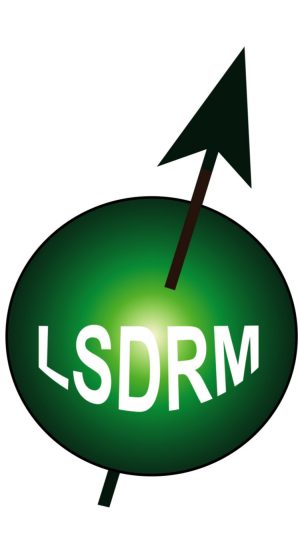Glasses are ubiquitous in many aspects of everyday life and modern technology. Thanks to its capacity to incorporate various chemical elements, many of its properties can be tuned to specific needs. Beside the emblematic researches related to high level radioactive waste vitrification, tremendous efforts have also been invested for the improvement of the fundamental knowledge of the vitreous state of glasses. Our researches touch various aspect of glasses – just to name a few – including the elucidation of atomic-level of glass structure for examining relationships between the chemical composition and macroscopic properties, and understanding the glass transition phenomena, the impact of thermal history radiation and weathering.
For amorphous materials like glasses, solid-state nuclear magnetic resonance (NMR) has established itself as a cutting-edge spectroscopic method to decipher the structure at an intermediate length scale (5-10 Angstroms). Our methodological developments focused on oxygen-17 NMR, a key element for oxide glasses, which enables connectivities between the elementary units building the glass network as well as cationic disorder to be quantitatively analyzed, as illustrated by recent studies of lead silicate glasses[1] or simplified nuclear waste lanthanum borosilicate glasses.[2] For chemical durability studies, an approach based on glass leaching in isotopically oxygen-17 enriched water solution was proven to provide new insights into the alteration layer structure revealing for example the variation of cationic environment of lanthanum from the glass to the reorganized silicate network forming at the glass surface.[3] Impact of the crystallization of rare-earth silicates on the glass structure and chemical durability could be evidenced by coupling multinuclear NMR analysis and alteration kinetics measurements.[4,5]
Recent references:
[1] Structure and chemical durability of lead crystal glass,
Angeli, F.; Jollivet, P.; Charpentier, T.; Fournier, M.; Gin, S. Environ. Sci. Technol. 2016, 50 (21), 11549–11558.
[2] Influence of Lanthanum on Borosilicate Glass Structure: A Multinuclear MAS and MQMAS NMR Investigation,
Angeli, F.; Charpentier, T.; Molières, E.; Soleilhavoup, A.; Jollivet, P.; Gin, S.J. Non-Cryst. Solids 2013, 376, 189–198.
[3] Chemical Durability of Lanthanum-Enriched Borosilicate Glass,
Molières, E.; Angeli, F.; Jollivet, P.; Gin, S.; Charpentier, T.; Majérus, O.; Barboux, P.; de Ligny, D.; Spalla, O. , Int. J. Appl. Glass Sci. 2013, 4 (4), 383–394.
[4] Silicate Crystallization in Borosilicate Glasses: Effect on Structural and Chemical Durability Properties,
Nicoleau, E.; Angeli, F.; Schuller, S.; Charpentier, T.; Jollivet, P.; Moskura, M. Rare-Earth , J. Non-Cryst. Solids 2016, 438, 37–48.
[5] Phase Separation and Crystallization Effects on the Structure and Durability of Molybdenum Borosilicate Glass,
Nicoleau, E.; Schuller, S.; Angeli, F.; Charpentier, T.; Jollivet, P.; Le Gac, A.; Fournier, M.; Mesbah, A.; Vasconcelos, F. J. Non-Cryst. Solids 2015, 427, 120–133.

Using a multinuclear NMR approach, we are currently exploring new glass compositions based on the lanthanum metaborate glass composition LaB3O6. A relatively wide glass domain in the SiO2-B2O3-La2O3 ternary system could be put in evidence,[6,7] using a melt-quenching method. Outside this domain, phase separation phenomena and/or crystallization of La-rich borate (LaBO3) and borosilicate (La3Si2BO10) phases are observed during quenching. Because of their high glass transition temperature (Tg > 660 °C) and their lack of hygroscopicity, transparent glasses in this system could find application, for instance in optics by partially substituting La by optically active rare earths. We are currently investigating Al2O3-B2O3-La2O3 ternary system, coupling our experimental studies to computational approaches.
[6] Structure and crystallization behavior of La2O3⋅3B2O3 metaborate glasses doped with Nd3+ or Eu3+ Ions.
Pytalev, D. S.; Caurant, D.; Majérus, O.; Trégouët, H.; Charpentier, T.; Mavrin, B. N. J. Alloys Compd. 2015, 641, 43–55.
[7] Exploration of glass domain in the SiO2-B2O3-La2O3 system
Trégouët, H.; Caurant, D.; Majérus, O.; Charpentier, T.; Lerouge, T.; Cormier, L., J. Non-Cryst. Solids 2017, 476 (Supplement C), 158–172.






